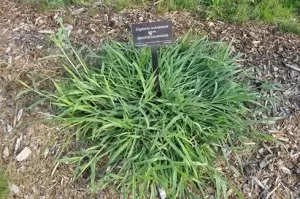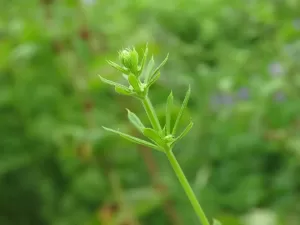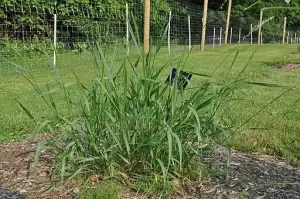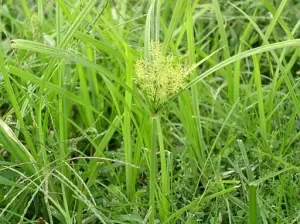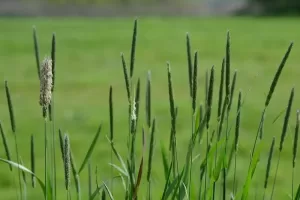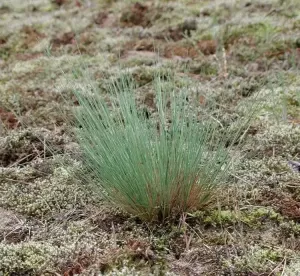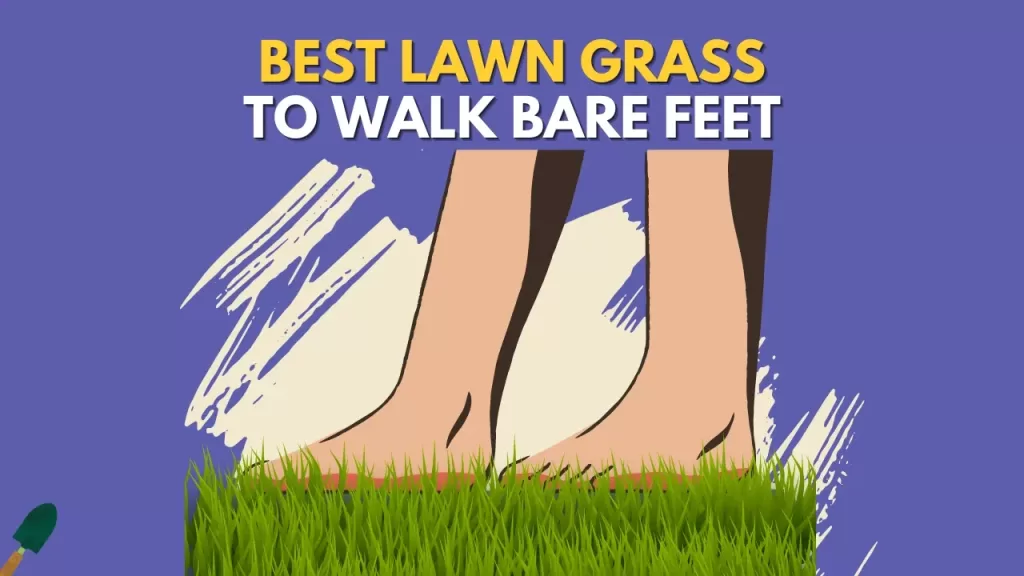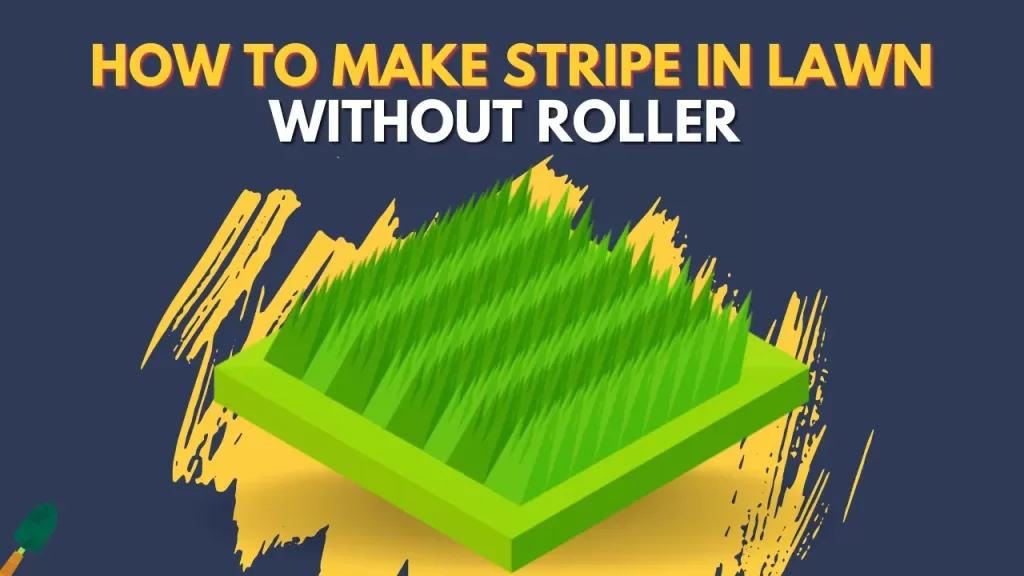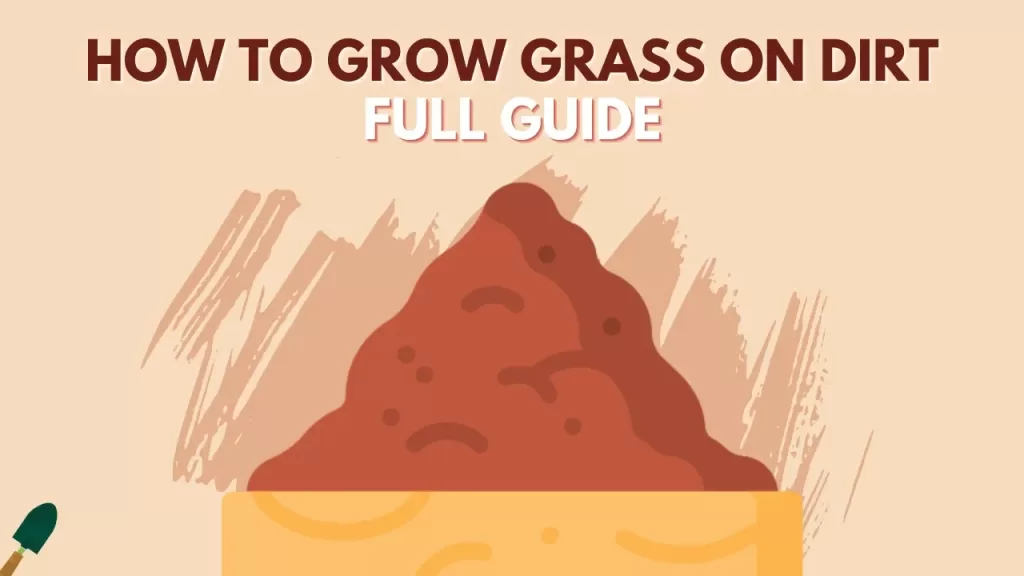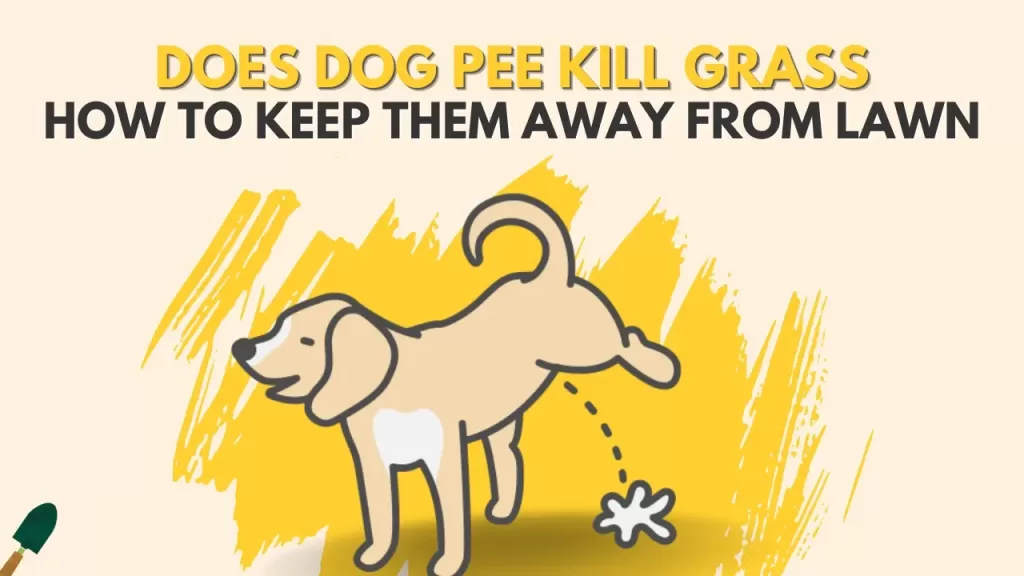If you are a gardener or landscaping enthusiast, you may have come across spiky grass in your garden or lawn. Spiky grass, also known as spike grass or weed grass, is a type of grass that can be identified by its sharp-pointed blades and tough texture.
While it may look visually appealing, spiky grass can be a nuisance and difficult to manage if left unchecked.
As a gardener, it is important to identify and understand the characteristics of spiky grasses to ensure that it does not take over your garden.
In this article, we will provide you with a comprehensive guide to spiky grass; including its definition, identification, and characteristics.
We will also cover common types of spiky grass, and tips about how to manage and keep it under control. So, let’s dive in and explore the world of spiky grass!
What is Spiky Grass?
Spiky grass is a common term for grasses that has sharp-pointed blades and a tough texture. It is a common type of weed grass that can be found in gardens and lawns, and it can be difficult to manage and control if left unchecked.
Spiky grasses can be identified by their distinctive structure; such as their sharp-pointed blades and tough texture. Its leaf blades are usually narrow and pointed, and they may be arranged in a flat or a folded manner.
Some common types of spiky grass include crabgrass, foxtail, and nutsedge.
While spiky grass may look visually appealing, it can cause a lot of problems if it begins to spread in your garden. It can compete with other plants for nutrients and water, and it can also create a devastating appearance.
Therefore, it is important to identify and manage spiky grass before it takes over your garden.
Characteristics of Spiky Grass
Spiky grass, as the name suggests, is characterized by its sharp-pointed blades and tough texture. Here are some of the key characteristics of spiky grass:
- Sharp-pointed blades: The blades of spiky grass are sharp and pointed, making them difficult to touch or walk barefoot.
- Tough texture: Spiky grass has a tough and wiry texture, which can make it difficult to remove from your garden.
- Fast-growing: Spiky grass can grow rapidly, especially in warm and humid conditions. It can quickly overtake other plants in your garden if left unchecked.
- Weed-like appearance: Spiky grass is often mistaken for a weed due to its invasive nature and unsightly appearance. It can grow in clumps or patches, and its leaves may be arranged in a flat or a folded manner.
- Adaptable: Spiky grass can adapt to a wide range of growing conditions, including poor soil quality and low moisture levels. It can thrive in both sunny and shady areas.
Identifying these characteristics can help you determine if you have spiky grass in your garden, and take steps to manage it effectively.
7 Common Spiky Grasses
Spiky grass can take on many different forms, and there are several common types that you may encounter in your garden. Here are some of the most prevalent spiky grasses:
- Crabgrass
- Goosegrass
- Quackgrass
- Nutsedge
- Yellow Foxtail
- Dracaena Spike
- Corynephorus Grass
Let’s talk about each grass in detail.
Crabgrass
Crabgrass (Digitaria sanguinalis) is a common type of spiky grass that belongs to the Poaceae family. It grows in clumps and has pointed, light green leaves that can quickly overtake a lawn or garden making it invasive. Crabgrass can be identified by its short, blunt seed heads that appear in the summer months.
Characteristics of crabgrass:
Family: Poaceae
Height: Up to 3 feet
Habitat Characteristics: Prefers full sun, tolerates dry conditions and low soil fertility, commonly found in lawns, gardens, and agricultural fields.
Hardiness Zone: Typically grown in USDA hardiness zones 3 to 9, but can grow in other zones as well.
Crabgrass is an aggressive weed that spreads quickly, making it a nuisance for homeowners and gardeners. It can be identified by its flat blades that are pale green and grow in a fan-like shape from the base of the plant.
It produces seed heads in the summer and fall, which are yellow-green and resemble a crab’s claw, giving the plant its common name.
The grass can be managed through proper lawn care practices such as regular mowing, watering, and fertilizing to promote a healthy lawn that is less susceptible to weed growth.
Pre-emergent herbicides can also be applied in the spring to prevent crabgrass seeds from germinating. For severe infestations, post-emergent herbicides can be used to kill crabgrass that has already sprouted.
Goosegrass
Goosegrass (Eleusine indica) is a thin, light-green annual grass that is commonly found in lawns and gardens. It is another type of spiky grass that has a distinctive rosette-like base, narrow leaves, and flattened stems that can grow up to 24 inches long. The grass produces small, greenish-white flowers that bloom from spring to fall.
Characteristics of Goosegrass
Family: Poaceae
Height: Up to 24 inches (60 cm)
Habitat characteristics: Goosegrass is commonly found in lawns, gardens, and other disturbed areas.
It prefers moist, well-drained soils and can tolerate both full sun and partial shade.
It is often found growing in clumps and can form dense mats that crowd out other plants.
Hardiness zone: Goosegrass can be found in a wide range of hardiness zones, from zones 2-11. It is considered a warm-season grass and is most commonly found in tropical and subtropical regions.
Quackgrass
Quackgrass (Elymus repens), also known as couchgrass, is a perennial grass species that is native to Europe and Asia. It has since been introduced to many parts of the world, including North America, where it is considered an invasive species.
It has pointed, blue-green leaves and a coarse texture. Quackgrass produces seed heads that can reach up to 3 feet tall, and it can be difficult to remove once established.
Characteristics of Quackgrass:
Family: Poaceae
Height: Quackgrass can grow up to 3 feet tall (90 cm).
Habitat Characteristics: Quackgrass grows well in fertile soil and can tolerate a wide range of soil types. It prefers areas with moist soil and moderate sunlight, but can also grow in shaded areas. It is often found in agricultural fields, lawns, and disturbed areas such as roadsides and construction sites.
Hardiness Zone: Quackgrass is hardy to USDA zones 3 to 7.
Quackgrass is a cool-season grass that spreads by underground stems called rhizomes, which can make it difficult to control once it becomes established. It is also known for its long, tapered leaves that have a distinctive blue-green color.
While some people may find quackgrass to be a visually appealing addition to their yard, it can quickly take over and crowd out other plants if left unchecked.
Nutsedge
Nutsedge grass, also known as nutgrass or yellow nutgrass, is a type of spiky grass that belongs to the Cyperaceae family. Unlike other types of grass, nutsedge grass grows from tubers or nutlets in the soil, making it difficult to control and eliminate from your lawn or garden.
The grass resembles a tall, narrow blade that has a triangular stem and pointed leaves that can be difficult to remove from your garden. Nutsedge produces small, brown seed heads in the summer and fall months.
Characteristics of Nutsedge
Family: Nutsedge grass belongs to the Cyperaceae family, which includes other types of spiky grasses such as water chestnut and papyrus.
Height: Nutsedge grass can grow up to 3 feet tall, but it typically stays shorter in lawns and gardens, reaching heights of around 1-2 feet.
Habitat: Nutsedge grass prefers moist soils and can grow in a variety of habitats, including lawns, gardens, fields, and wetlands. It’s often found in areas with poor drainage or areas that are frequently irrigated.
Hardiness Zone: Nutsedge grass can grow in a range of hardiness zones, but it’s most commonly found in warm-season regions, such as the southern United States.
Nutsedge grass can be a nuisance for gardeners and lawn enthusiasts, as it can quickly take over a lawn or garden bed. If you’re struggling with nutgrass in your lawn, consider using a combination of manual and chemical control methods to eliminate it from your property.
Yellow foxtail
Yellow foxtail (Setaria pumila) also known as yellow bristle grass is considered a spiky grass. It has a distinctive seed head that looks like a spiked bottle brush, with bristly hairs that can be sharp and prickly to the touch. The leaves of the plant are also spiky and can be quite stiff.
Yellow foxtail is an annual grass that is common in agricultural fields, gardens, and other disturbed areas throughout much of North America.
Characteristics of Yellow Foxtail:
The yellow foxtail grass can grow up to 3 feet tall.
It has a distinctive yellow-green color that makes it easy to identify.
The leaves are narrow and can grow up to 8 inches long.
The seed heads are cylindrical and can reach up to 6 inches long.
Family: Yellow foxtail belongs to the Poaceae or grass family, which is the fifth-largest plant family and includes more than 10,000 species of grasses.
Height: Yellow foxtail can grow up to 3 feet tall.
Habitat Characteristics: Yellow foxtail is commonly found in disturbed areas such as roadsides, fields, and waste areas. It grows in a variety of soil types, including sandy and loamy soils. It is also drought-tolerant and can survive in dry conditions.
Hardiness Zone: Yellow foxtail is an annual grass and does not have a hardiness zone. It can grow in many different climates but typically prefers warmer temperatures.
Dracaena Spike
Dracaena Spike, scientifically known as Dracaena marginata, is an evergreen perennial plant that belongs to the Asparagaceae family. It is commonly known as Red-edge Dracaena, Madagascar Dragon Tree, or Dragon Plant.
Although it is a spiky-looking grass native to Madagascar, it has become a popular houseplant worldwide due to its attractiveness and low maintenance requirements.
Characteristics of Dracaena Spike
Family: Dracaena Spike belongs to the Asparagaceae family, which is a large family of flowering plants. It includes more than 3000 species and 160 genera, including popular plants like asparagus, lily of the valley, and yucca.
Height: Dracaena Spike can grow up to 6-8 feet in height when grown in suitable conditions. However, as a houseplant, it usually grows to about 2-3 feet tall.
Habitat Characteristics: Dracaena Spike is a slow-growing plant that requires low to medium light and moderate humidity. It can thrive in a wide range of temperatures but prefers a warm and humid environment. It is drought-tolerant and can withstand periods of neglect, making it a popular choice for beginners.
Hardiness Zone: Dracaena Spike is suitable for hardiness zones 10 and 11, which are characterized by mild to warm temperatures throughout the year. It is not frost-tolerant and should be protected from cold temperatures.
Corynephorus Grass
Corynephorus grass, also known as spiky hard grass, is a low-growing grass with fine, needle-like leaves. The leaves are dark green and wiry, and the grass produces inconspicuous flowers on spikes that grow from the center of the plant.
Characteristics of Corynephorus Grass
Family: Poaceae
Height: Corynephorus grass grows to a height of around 10-15 cm (4-6 inches).
Habitat characteristics: Corynephorus grass is a hardy grass that is well adapted to dry, infertile soils. It is often found in heathland, moorland, and other open, grassy habitats. It is commonly found throughout Europe, Asia, and North America.
Hardiness zone: Corynephorus grass is tolerant of a wide range of temperatures and can grow in USDA hardiness zones 4-9. It is considered a cool-season grass and grows best in cool, moist conditions.
Identifying these common types of spiky grass can help you take steps to manage them effectively. In the next section, we will discuss some strategies for controlling spiky grass in your garden.
How to Manage Spiky Grass in Your Garden
While spiky grasses can be a trouble in your garden, there are several methods you can use to manage them effectively. Here are some ways to keep your garden free from unwanted spiky grass:
1. Hand Pulling – If you only have a small area with spiky grass, hand pulling may be the best option. Use gloves to protect your hands, and gently pull the grass out by the roots. Be sure to remove all of the roots, or the grass will quickly regrow.
2. Mowing – Mowing can be an effective way to manage spiky grass, especially if you have a larger area to deal with. Set your mower to a low setting, and mow the area frequently to prevent the grass from growing too tall. This will weaken the grass over time and eventually kill it.
3. Herbicides – Herbicides can also be used to control spiky grass, but it’s important to choose the right product for the type of grass you’re dealing with. Glyphosate-based herbicides are effective on most types of spiky grass, but be sure to follow the instructions carefully to avoid damaging other plants in your garden.
4. Cultural Practices – Maintaining healthy soil and using proper cultural practices can also help to prevent spiky grass from taking over your garden. Here are some tips:
- Ensure proper drainage: Spiky grasses thrive in moist soil, so make sure your garden has proper drainage to prevent water from accumulating.
- Fertilize regularly: Fertilizing your plants regularly can help them grow strong and healthy, which will make them more resistant to spiky grass invasion.
- Mulch: Applying a layer of mulch around your plants can help to suppress spiky grass growth by blocking out sunlight and preventing the grass from germinating.
By following these tips and techniques, you can effectively manage spiky grass in your garden and keep your plants healthy and thriving.
Frequently Asked Questions
Here are some common questions related to spiky grass:
What are that spiky grass balls?
The spiky grass balls known as grass burrs or sandburs have pointy thorns and can hurt humans and animals or stick in clothes. These grass burrs or sandburs come from buckeye/horse-chestnut (Aesculus), chestnut (Castanea), or sweet gum (Liquidambar styraciflua).
What are that spiky grass seeds?
The spiky grass seeds you are seeing in the lawn or your garden are seedpods produced by plants or shrubs. These seedpods are also known as sandburs or grass burs which can spread in the field and produce new grass or plants.
How can I identify spiky grass in my lawn or garden?
Spiky grasses can be identified by their spiky and upright growth habit, with leaves that are sharp and pointed at the tip. They often grow in clumps and have a coarse texture compared to other grasses.
Is spiky grass harmful to pets or humans?
While spiky grasses are not typically harmful to pets or humans, they can cause irritation or injury if touched or stepped on barefoot. It is best to wear gloves and shoes when handling spiky grasses.
Can spiky grass be used as turfgrass?
Some spiky grasses, such as annual bluegrass and tall fescue, can be used as a turfgrass in certain situations. However, they may not be as desirable as other turfgrass species due to their spiky texture and potential for clumping.
How can I prevent spiky grass from spreading in my garden?
The best way to prevent spiky grass from spreading is to regularly remove any seed heads and pull out any clumps of grass by the root. You can also apply a pre-emergent herbicide in the spring to prevent new growth.
Can I use herbicides to control spiky grass in my lawn or garden?
Yes, there are herbicides available that can effectively control spiky grass. However, it is important to carefully read and follow the label instructions and use herbicides as directed to avoid damage to surrounding plants or the environment. It is also important to note that some spiky grasses may be resistant to certain herbicides.
Are there any benefits to having spiky grass in my garden?
The main benefits of spiky grasses are that they are very low maintenance and can be planted around hedges. Most of the spiky grasses can tolerate drought and heat and can grow in less fertile soil.
Conclusion
Spiky grass can be a challenge for any gardener, but with the right tools and techniques, it can be managed effectively.
By understanding the characteristics and common types of spiky grass, you can take the necessary steps to prevent its growth and control its spread in your garden.
Whether you prefer natural or chemical methods, there are many options available to suit your needs and preferences.
Remember, the key to successful spiky grass management is persistence and patience. It may take some time and effort, but with the right approach, you can enjoy a lush and healthy garden free of unwanted spiky grass.
So get out there and start taming those spiky blades, and enjoy the fruits of your labor!

